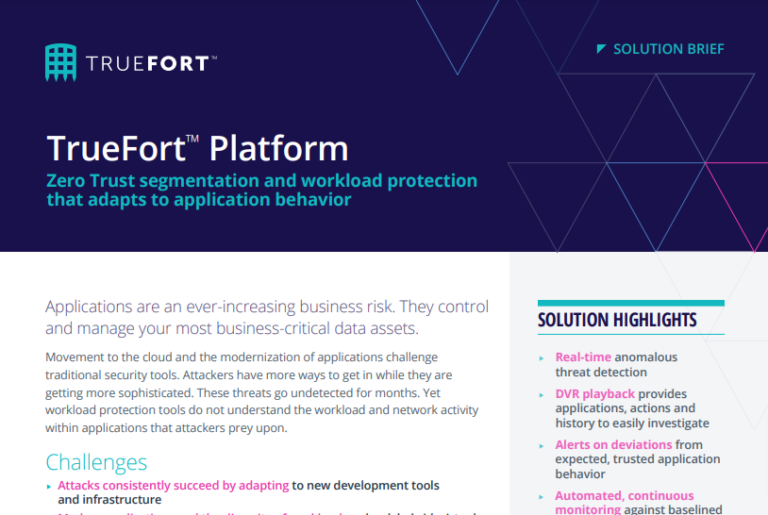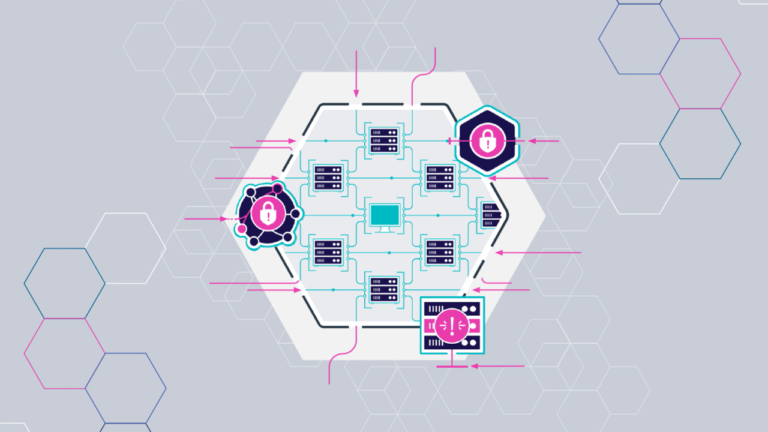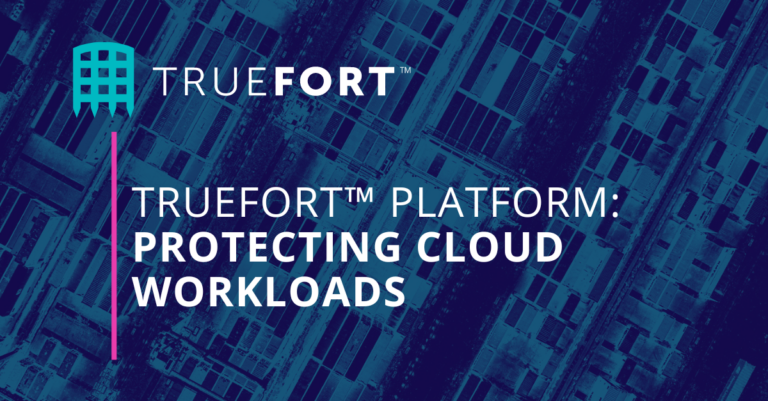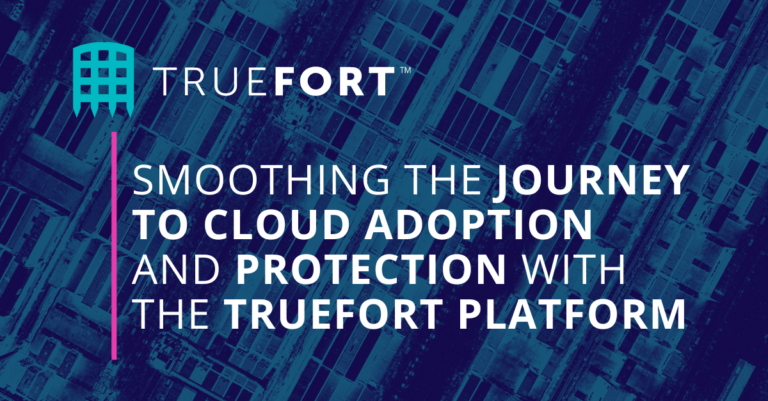TRUEFORT SOLUTION
Enterprise-grade Cloud Workload Protection Platform
Existing management and monitoring tools lack the ability to detect workload configuration risks and identify malicious activity. TrueFort protects cloud workloads from compromise by actively blocking anomalous activity, on-premises or in the cloud.
Point solutions fail to understand application communications and dependencies
- Shifting security threats – increased sophistication has made blocking known attack indicators ineffective .
- Unrestricted lateral movement – after access occurs, attackers can often move across the network, unrestricted.
- Workload protection lacks application context – security teams can’t know and validate workload behavior with application owners.
- Security is different in the cloud – applications and their dependencies can’t be monitored from network devices during migration.

Protecting workloads requires understanding and enforcing legitimate behavior
Application-centric segmentation
Enforce workload segmentation to protect against lateral movement, ransomware, and data exfiltration attacks, sending clear and actionable insights to the SOC.
Trusted workload profiles
Continuously monitor for drift in workload behavior with a positive security model, alerting on (or blocking) activities outside of the expected norm.
Automated segmentation policies
Understand, manage, and control trust around workloads to proactively protect against unknown risks that threaten sensitive data.
Least privilege access
Learned behavior enables security teams to create least privileged access policies and avoid risk in cloud environments
FAQ
Cloud workload protection refers to the set of security measures and practices implemented to ensure the security, integrity, and availability of workloads deployed in cloud environments. It focuses on protecting the applications, services, and data running within virtual machines, containers, or serverless instances in the cloud.
Cloud workload protection encompasses various security controls, such as:
- Vulnerability Management: Regular scanning and patching of cloud workloads to address any known vulnerabilities and minimize the risk of exploitation.
- Intrusion Detection and Prevention: Deploying systems that monitor network traffic and behavior to identify and prevent unauthorized access or malicious activities within cloud workloads.
- Data Encryption: Applying encryption techniques to protect sensitive data both at rest and in transit, ensuring confidentiality and preventing unauthorized access.
- Access Controls and Identity Management: Implement strong authentication mechanisms, role-based access controls, and robust identity and access management practices to ensure only authorized users can access cloud workloads.
- Security Monitoring and Incident Response: Leveraging advanced security monitoring tools and establishing incident response procedures to promptly detect and respond to security incidents.
By implementing comprehensive cloud workload protection measures, organizations can maintain a strong security posture, safeguard their digital assets, and ensure their cloud-based workloads’ continuous and secure operation.
A cloud workload protection platform (CWPP) is a comprehensive security solution designed to protect and secure workloads deployed in cloud environments. It provides a unified and centralized approach to securing virtual machines, containers, serverless functions, and other cloud-based workloads. A CWPP typically offers features such as vulnerability management, workload visibility, network security, threat detection and prevention, data encryption, access controls, and compliance management. By utilizing a CWPP, organizations can ensure the integrity, confidentiality, and availability of their cloud workloads, mitigating risks and maintaining a strong security posture in the cloud.
Resources













